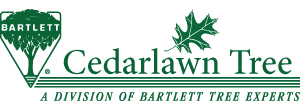Storm-Related Tree Damage
Storm-Related Tree Damage – Part I
We are all aware of role trees play in our everyday lives, primariliy for better but sometimes, in the case of Hurricane Irene, for the worse. When you are stuck without electricity, manuevering through closed roads that
make that commute a nightmere or, worse yet, have had fallen limbs or trees cause damage to your property, those friendly and beneficial assets may seem anything but. The value of that screening , the reduction of cooling costs, the addition to property values and the pleasure of having beautiful specimens that are often admired and revered can seem a distant memory. Storms such as Irene, for those of you who diligently care for your trees and take every step to keep them healthy and your property safe, can sometimes create devastating effects simply by disfiguring a prized tree. While some tree damage can be hard to avoid, as in this case with Irene, there are steps that can be taken to help mitigate potential damage to trees and properties. In this first installment of a three-series blog, we will examine why and how limb and trunk breakage can occur.
The most common type of tree damage is limb breakage. If tree trunks incur a loss of structural strength entire leaders (trunks) can snap. What causes some limbs and trunks to break and can damage be predicted? Branches and trunks usually fail due to compromises to their physical integrety. This integrity is proved by 2 components: sapwood and heartwood. Sapwood is located towards the outside of the branch or trunk under the bark. This is where the trees living conductive tissues (xylem) are located. Heartwood is located on the inner part of the branch or trunk and consists of formally living conductive tissue that is no longer active. Biochemical changes occur within heartwood as it develops to help ward off decay and provide a solid inner core for structural strength. Loss of structural integrity can occur through injury due to insect or disease, previous weather-related or physical damage, weak structure due to growth characteristics or even improper pruning. This in turn can create heartwood decay.
Branches that have suffered partial damage from disease pathogens that kill their outer conductive tissues (sapwood) develop cankers where injury has occurred. Cankers are dead portions of limbs and are often sunken relative to living healthy wood that continues to grow around the canker. Branch death will occur if the canker enlarges to the point where it completely encircles the branch. A canker decreases a branches structural strength by creating a void in the shell of healthy, sound wood surrounding a branch. Structural integrity is decreased as cankers enlarge. It also increases the potential for heartwood decay.
Heartwood decay can result if the wood surrounding the heartwood is damaged. This can allow fungal decay organisms to invade the heartwood. The length of exposure to decaying organisms, along with the trees ability to compartmentalize injurious decay, is related to the health of and energy reserves of the tree that in turn influence the growth and biochemical processes within the tree.
The manner in which trunks and branches develop also influences their inherent strength. Branch angle of attachment (the angle that the branch emerges from the trunk or another branch) influences branch strength. A branch with a very narrow angle of attachment is often weaker than a branch that emerges closer to perpendicular to the trunk or branch. Trees with several main leaders (codominant leaders) arising off the trunk can often develop included bark. This is where bark grows against bark and does not form a true
connective attachment. These multiple leaders can in turn grow outward and upward at angles that influence the weight distribution along its axis and can exert increased force on the point of basal attachment.
In next week’s blog we will examine why entire trees may become uprooted.





